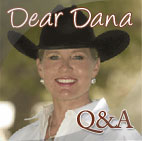The ‘when’ and ‘why’ of applying leg aids
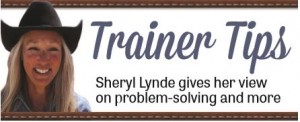 Learning to use your legs and seat in addition to your hands will develop balance, keep you safely in the saddle, and allow your horse to perform at his best.
Learning to use your legs and seat in addition to your hands will develop balance, keep you safely in the saddle, and allow your horse to perform at his best.
Riders often believe they are using their legs, but as an observer, it’s clear to see space between their leg and the horses’ sides. The correct stirrup length plays a big role in the ability of the rider to use their legs comfortably. If stirrups are too long, the rider is constantly reaching for them as they ride, straightening their legs until they feel contact. In order to make contact, they reach with their toes and by pointing their toes down; the rider develops a habit of leaning forward. If the stirrups are too short, the rider places too much weight in the stirrup which can contribute to knee pain at the very least.
Getting the turnaround right
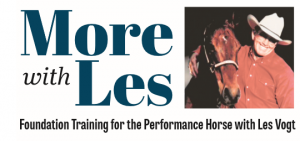 When you first start the exercise, I think it’s a good idea to push him up with both legs and then open your inside leg as you start the turn to help the horse find the move that you’re after. Also, approaching the turn with some inside leg will discourage your horse from leaning on your inside rein as you start to turn. If you feel him starting to lean, you might want to go back to exercise number two for a while and lighten him up. One thing to be careful of is that if he starts to lean or twist his head in the turnaround, he could end up shifting his weight to the outside hind leg, rather than the inside. We’ll be riding him into the turn with both legs once he gets the hang of it, but opening your inside leg at first is fine and can help your horse along.
When you first start the exercise, I think it’s a good idea to push him up with both legs and then open your inside leg as you start the turn to help the horse find the move that you’re after. Also, approaching the turn with some inside leg will discourage your horse from leaning on your inside rein as you start to turn. If you feel him starting to lean, you might want to go back to exercise number two for a while and lighten him up. One thing to be careful of is that if he starts to lean or twist his head in the turnaround, he could end up shifting his weight to the outside hind leg, rather than the inside. We’ll be riding him into the turn with both legs once he gets the hang of it, but opening your inside leg at first is fine and can help your horse along.
The 4 common mistakes riders make
 When people come for a lesson or an evaluation, there are common mistakes shared by most riders. Let’s talk about the Top Four and the remedy for each.
When people come for a lesson or an evaluation, there are common mistakes shared by most riders. Let’s talk about the Top Four and the remedy for each.
1. Lack of Rein Management
Reins being either too loose or too tight pose risks to a rider’s safety. When the reins are too loose, the rider’s hands are out of position, as they rise to their chest or chin in order to make contact with the bit. To make up for a lag in contact and response, the rider develops fast hands and jerks to get the response they are looking for.
Having the reins too tight causes the horse to brace against the rider’s hands. Since the horse learns from release and not pressure, there are limited training opportunities. The horse becomes micromanaged, meaning there is constant contact. Therefore, the horse is given no release for the correct response, and the rider balances on the horse’s mouth instead of their seat and is easily out of control.
Fear: Resistance to our dreams
 A certain level of fear is healthy — we call it common sense. Fear compels us to focus, to direct our attention to the present moment while attempting to push our personal limits by bravely testing the water outside our comfort zone. However, too much fear will inhibit you from advancing your ability.
A certain level of fear is healthy — we call it common sense. Fear compels us to focus, to direct our attention to the present moment while attempting to push our personal limits by bravely testing the water outside our comfort zone. However, too much fear will inhibit you from advancing your ability.
By living within your comfort zone, growth will elude you. There is never an end-destination to becoming a horseman. There will always be another personal best to achieve, another goal to reach, in order to become the rider your horse deserves. It is the ride of your life.
Worries are chronic fears. There’s fear of getting hurt, fear of getting back in the saddle after being injured, and fear of judgement by others. We have to be a watcher of our thoughts — keep your eyes on what you want to accomplish, not on what created your fear.
The Start of the Turnaround
 So how do we start to teach the turnaround? We start by walking in a circle about 10 feet in diameter. You want to use your circle to establish the correct bend, so bring your circle down to where your horse’s spine is bent evenly and you can just see the corner of the horse’s eye.
So how do we start to teach the turnaround? We start by walking in a circle about 10 feet in diameter. You want to use your circle to establish the correct bend, so bring your circle down to where your horse’s spine is bent evenly and you can just see the corner of the horse’s eye.
Now let’s stop here and think about the difference between this forward circle and the turnaround. In the turnaround, we will want to maintain the same bend and the same cadence (or rhythm), at least at this level. We want the front legs to keep moving, we want the outside back leg to keep moving, but we just want to slow down, or even stop, the forward movement of the inside hind leg.
The cold-backed horse may just need more ground work
 Years ago I was giving a clinic in mid-July, and I noticed that an owner would blanket her horse each night with a fairly thick blanket. A combination between the heat of summer and the weight of the blanket produced a pretty good sweat, so I asked the owner, “Why the blanket?”
Years ago I was giving a clinic in mid-July, and I noticed that an owner would blanket her horse each night with a fairly thick blanket. A combination between the heat of summer and the weight of the blanket produced a pretty good sweat, so I asked the owner, “Why the blanket?”
She explained that when she purchased her horse she had been informed that he was “cold-backed”. Hence, the blanket.
The term “cold-backed” is not a physical description. It’s just an analogy that indicates they need to be worked on the ground or warmed up prior to riding. In the same way, people can be regarded as being cold because of their inability to show emotion or empathy. Again, this is just a description to identify a particular characteristic.
Turnaround: Starting Spins
Foundation Training for the Performance Horse with Les Vogt
The Elevator Bit
After looking at collection and rating speed the last couple of columns, Les takes a break to look at bits.
 The elevator bit might look a litt le odd, but it’s a tool I developed several years ago, and I really like what it can do for some horses. If a horse has learned to get away with things in a smooth snaffl e it makes riding them a lot of work. If this is your situation, and the horse is ready, that is, he’s picked up everything we’ve worked on so far, you might want to try the elevator bit.
The elevator bit might look a litt le odd, but it’s a tool I developed several years ago, and I really like what it can do for some horses. If a horse has learned to get away with things in a smooth snaffl e it makes riding them a lot of work. If this is your situation, and the horse is ready, that is, he’s picked up everything we’ve worked on so far, you might want to try the elevator bit.
Now here’s the way that an elevator bit works. Since the curb is so loose, the bit will stretch the horse’s mouth upon contact, just like a regular snaffle does, but at a certain point, he’s going to feel the chain too.
Honesty is the only policy when evaluating your horse
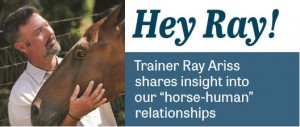 HEY RAY! I recently adopted a 5-year-old Thoroughbred mare off the track. She behaves well except when I put a saddle on. Then she gets antsy and walks on top of me and sometimes rears. But once the saddle is on, she’s fine. How do I get her to stop before she gets too dangerous?
HEY RAY! I recently adopted a 5-year-old Thoroughbred mare off the track. She behaves well except when I put a saddle on. Then she gets antsy and walks on top of me and sometimes rears. But once the saddle is on, she’s fine. How do I get her to stop before she gets too dangerous?
–April Zimmerman, Aguanga, Calif
Handling the Chargey Horse
 Now that we have learned how to “rate” our speed, let’s take a look at handling too much forward motion.
Now that we have learned how to “rate” our speed, let’s take a look at handling too much forward motion.
Now I’m going to tell you how to deal with a horse that’s a bit chargey. That is, he has a lot more forward motion than you enjoy, and not as much control as you would like. It’s a common problem, but you’ve got to fix it.
I’ve learned how to deal with this kind of horse by working on their neck and by reverse psychology. If he wants to go faster and push me, that is, if he wants to choose speed, I don’t like that idea much. I’m paying for the feed here, and I should get to make those choices. But what do I do? I can’t whip him; he’s too big. So I’ll make him think I agree with him and let him go, but when he wants to slow down, I’m not going to let him. And all the time I’m going to keep his shoulders up, occasionally asking him to frame up, but I’m going to keep him going right along. When he wants to slow, sentence him to three laps more. He’ll be saying, “Hey buddy, I’m getting a little tired here.” He’ll look back at you (and that alone makes it worth it) and say, “Why don’t you slow me down?” And you say, “Why? I’m starting to like this!” You want to ride him until he’s thrilled with the idea of stopping. Don’t cripple him, mind you, but make him look forward to you deciding when it’s time to quit. Then ride to the middle of the arena, let him stop, get off, unsaddle and give him his reward.


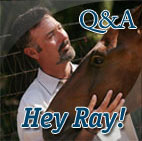
 Read Columns
Read Columns
